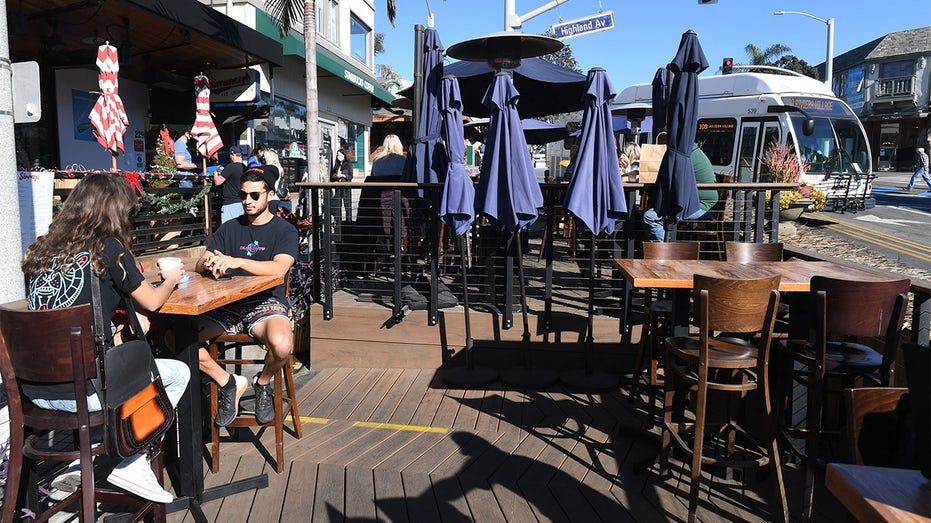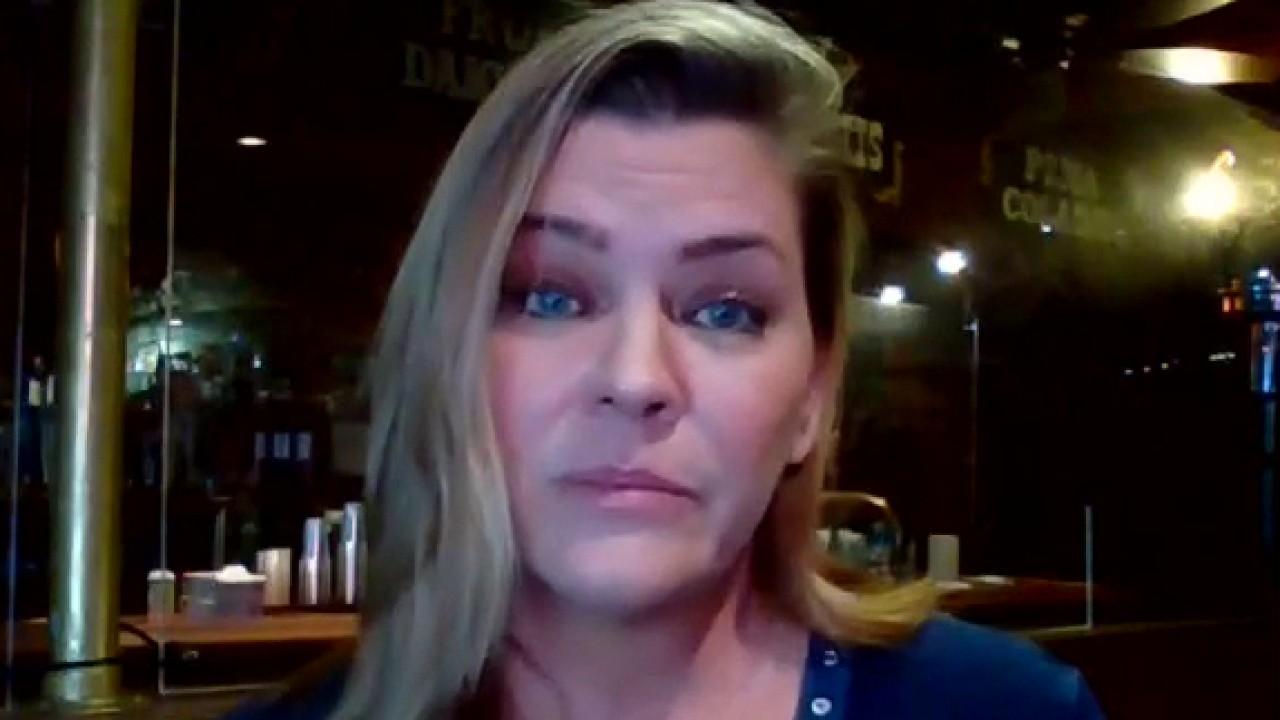California city redesignates existing outdoor dining locations as 'public seating' to help small businesses, restaurants
The move counters an outdoor dining ban imposed by LA County's Department of Public Health on Nov. 25
Manhattan Beach, California, has issued an order that redesignates existing outdoor dining spaces as "public seating" in order to encourage residents to support local restaurants and retailers while complying with Los Angeles County's COVID-19 restrictions.
RESTAURANT OWNER: CORONAVIRUS LOCKDOWNS IN CALIFORNIA WILL BRING DEATH, POVERTY
People who use the areas must comply with L.A. County's revised protocols, including wearing a mask, social distancing and not gathering with anyone outside of your immediate household.
“Our business community is struggling to survive the County’s latest restrictions and the City has a win-win solution to help, while safeguarding public health,” Mayor Suzanne Hadley said in a statement. “Additional public seating areas will strike this balance and repurpose public areas that temporarily can’t be used for outdoor dining because of the County’s restrictions.”
Restaurants are not permitted to serve customers indoors or outdoors and are limited to takeout and delivery. In addition, the public seating areas will have regulations consistent with other public areas throughout the city, including:
- No reservation of seating;
- Face coverings must be worn;
- Maintaining social distancing;
- No smoking or vaping;
- Must throw away trash in receptacles;
- No alcohol;
- No disorderly conduct or noise; and
- No littering or sleeping overnight.
The areas will be closed from 10 p.m. - 7:30 a.m., and residents who choose to use the public areas should sanitize tables after use.

MANHATTAN BEACH, CA - DECEMBER 04: Siblings Jacquie and Ryan McCourt enjoy coffee while waiting for their takeout order at Simmzy's in Manhattan Beach on Friday, December 4, 2020. The city has allowed the repurposing of outdoor dining spots to public
Manhattan Beach's order is the latest counter to LA County Department of Public Health officials' outdoor dining ban imposed on Nov. 25, which was approved by the County Board of Supervisors despite no evidence provided of a scientific link between outdoor dining and the spread of the coronavirus.
CORONAVIRUS LOCKDOWN IN CALIFORNIA FORCES BUSINESS TO FLEE THE STATE
On Sunday, Dec. 5, California Gov. Gavin Newsom's regional stay at home order officially took effect as coronavirus cases and hospitalizations continue to surge in the state at an alarming pace.
The order, which will last for at least three weeks, will be triggered for any region whose Intensive Care Unit Capacity drops below 15 percent capacity. Cities have been broken up into five regions, including Northern California, the Bay Area, Greater Sacramento, San Joaquin Valley, and Southern California.
Residents are required to stay at home as much as possible and minimize mixing to reduce unnecessary exposure, while still being able to do important things like go to the doctor, buy groceries, pick up take out, go on a hike or worship outdoors.
Indoor and outdoor playgrounds, indoor recreational facilities, hair salons and barbershops, personal care services, museums, zoos, and aquariums, movie theaters, wineries, bars, breweries and distilleries, family entertainment centers, cardrooms and satellite wagering, live audience sports and amusement parks must close in regions where the order is triggered.
K-12 schools that are already open can remain open and retailers can operate indoors at no more than 20% capacity to reduce exposure risk. Additionally, special hours should be instituted for seniors and others with chronic conditions or compromised immune systems. Outdoor recreational facilities can operate without any food, drink or alcohol sales and overnight stays at campgrounds are prohibited. Hotels are allowed to open for critical infrastructure support only.
Offices must switch to a remote only environment except for critical infrastructure sectors where remote working is not possible. Places of worship may only conduct outdoor services and entertainment productions including professional sports must operate without live audiences and are highly encouraged to create 'bubbles' which involve COVID-19 testing protcols.
GET FOX BUSINESS ON THE GO BY CLICKING HERE
Counties are eligible to come off the Regional Stay at Home Order after three weeks if their hospital ICU capacity projected four weeks out reaches 15%. Following their exit from the order, the counties would return to the Blueprint for a Safer Economy tier system determined by case rate and test positivity.
California reported 23,272 new COVID-19 cases and 112 additional deaths Monday, bringing the statewide totals to more than 1.3 million confirmed cases and more than 20,000 deaths. The number of Californians hospitalized as of Monday due to confirmed and suspected COVID-19 cases reached a total of 11,511.




















